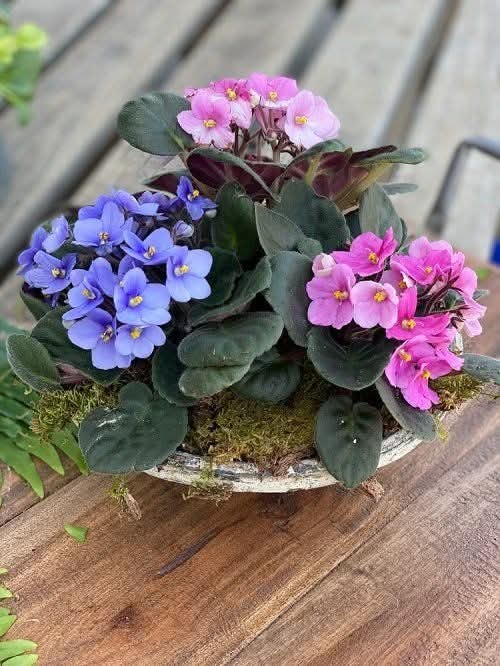How to Grow African Violets Outdoors in Your Garden 🌸🌿
A Complete Guide to Thriving Blooms
African Violets are beloved for their velvety leaves and colorful blooms, but most people grow them only indoors. With the right care, however, African Violets can be grown outdoors—and they can thrive beautifully! The key is recreating the gentle, protected environment they enjoy indoors while letting nature boost their growth and flowering.
1. Choose the Right Outdoor Location
African Violets are sensitive plants. To grow them outdoors successfully, choose a space that provides:
- Bright, indirect light
- Morning sun and afternoon shade
- Shelter from wind and heavy rain
Ideal outdoor locations include:
- North- or east-facing sides of the house
- Covered patios or verandas
- Shaded garden beds under trees with dappled light
Avoid direct midday sun—it can burn their delicate leaves.
2. Prepare Well-Draining Soil
African Violets need loose, airy soil. Use:
- 50% potting soil
- 25% perlite
- 25% peat moss or coconut coir
If planting in the ground, amend garden soil with compost and perlite to improve drainage. Poor drainage leads to root rot quickly.
3. Planting African Violets Outdoors
You can plant them directly in the garden or keep them in pots placed outdoors.
For best protection:
- Plant them in raised beds or pots
- Avoid low areas where water collects
- Space plants 6–8 inches apart for airflow
Keeping them in containers lets you move them easily during extreme weather.
4. Watering the Right Way
African Violets dislike wet leaves. Outdoors, water carefully:
- Water at the base of the plant
- Avoid splashing the leaves
- Keep soil evenly moist but not soggy
Water early in the morning so excess moisture evaporates by evening.
5. Maintain Humidity Without Overwetting
Outdoors, African Violets enjoy higher humidity, but too much water on the leaves is harmful.
To help them:
- Mulch lightly around the plants
- Keep them under partial cover
- Avoid placing them near sprinklers
Humidity should be moderate, not dripping.
6. Protect Them from Temperature Extremes
African Violets thrive between 65–80°F (18–27°C).
Outdoors, protect them from:
- Cold nights below 55°F (13°C)
- Harsh heat above 90°F (32°C)
In cold climates, they must be brought indoors or into a greenhouse.
7. Fertilize for Continuous Blooms
Feed every 2–4 weeks with:
- A balanced liquid fertilizer, or
- A bloom-boosting African Violet fertilizer
Outdoor violets bloom more when fed regularly and grown in filtered light.
8. Watch for Pests
Outdoors, African Violets may encounter:
- Aphids
- Mealybugs
- Spider mites
- Snails and slugs
Use neem oil spray or insecticidal soap as a safe treatment. Elevate pots to prevent slug damage.
9. Seasonal Adjustments
- Spring–Summer: Best time for keeping them outdoors
- Autumn: Move them indoors when temperatures drop
- Winter: Keep indoors in bright indirect light
Their outdoor “vacation” helps them grow fuller and flower more.
10. Benefits of Growing African Violets Outdoors
- Brighter, more vibrant blooms
- Increased air circulation
- Stronger and bushier growth
- Natural humidity improves leaf health
- A more natural, resilient plant overall
🌸 Growing African Violets outdoors is absolutely possible with the right care. Give them gentle light, warm temperatures, and protection from harsh weather, and they’ll reward you with abundant, colorful blooms all season long.
